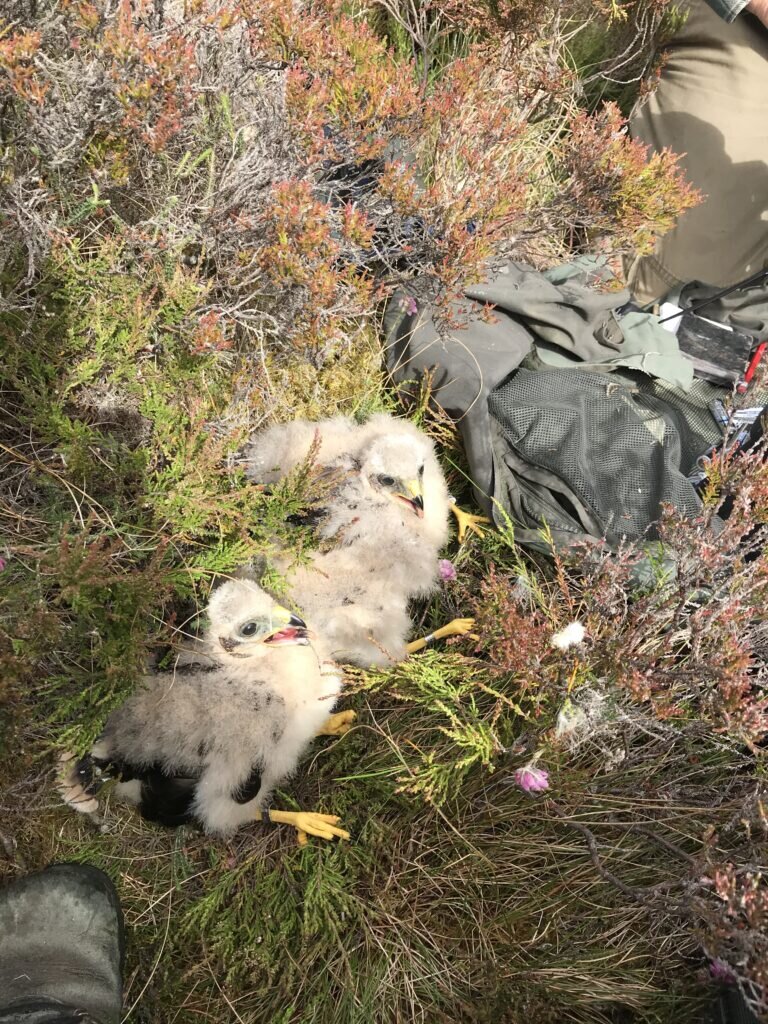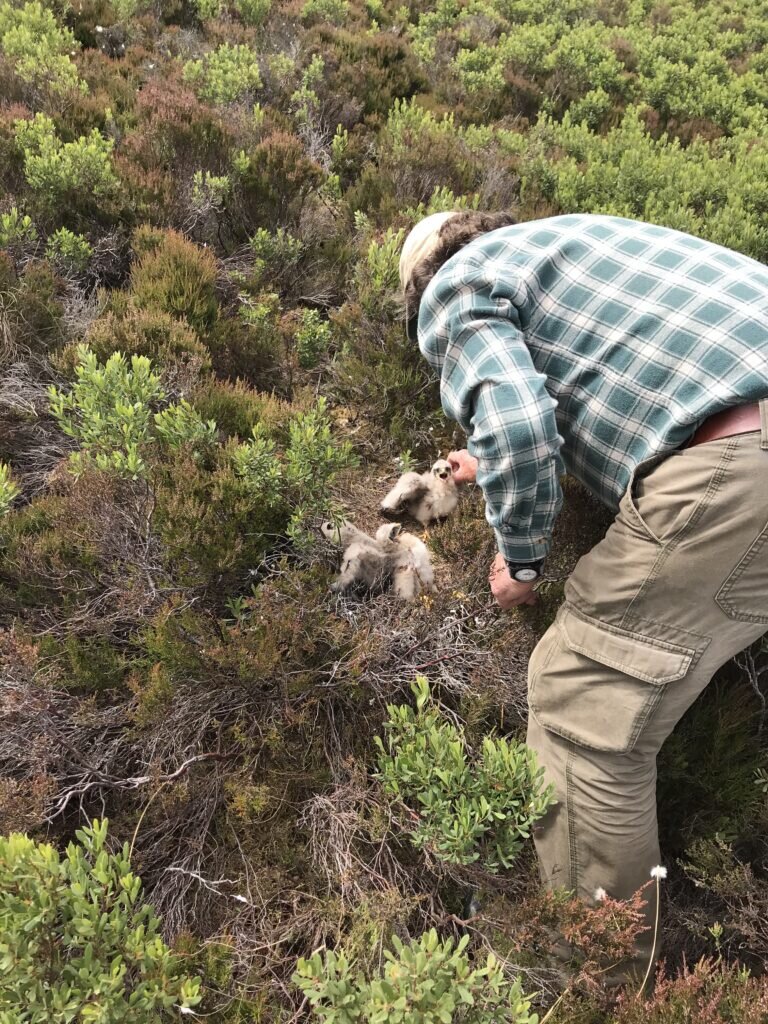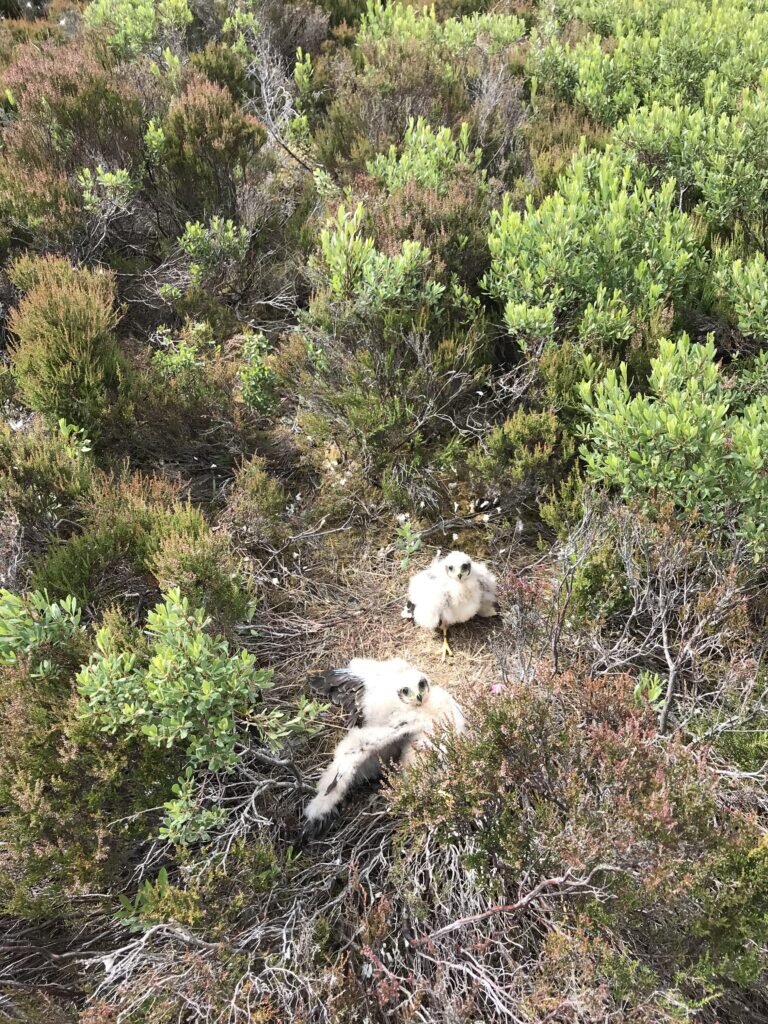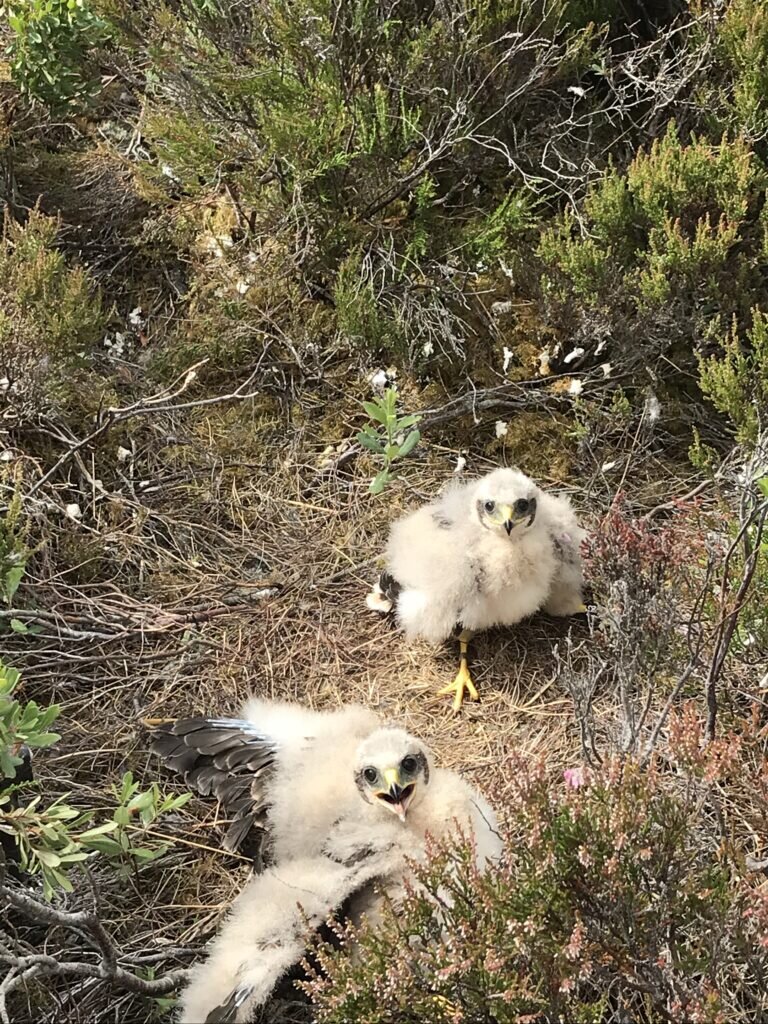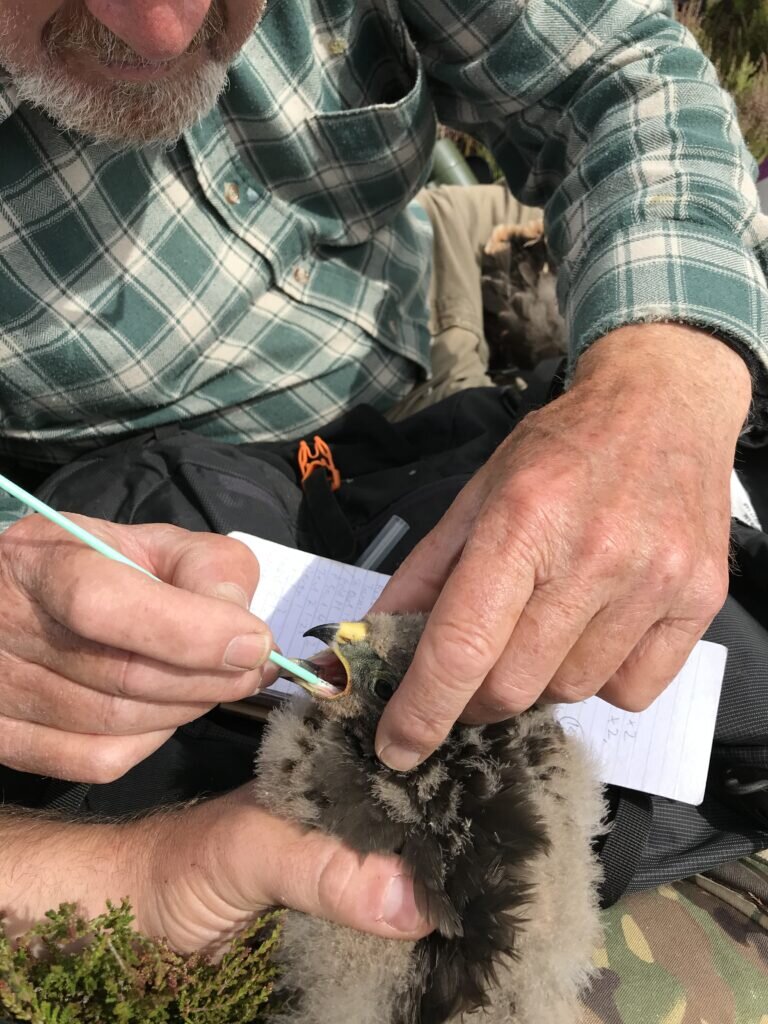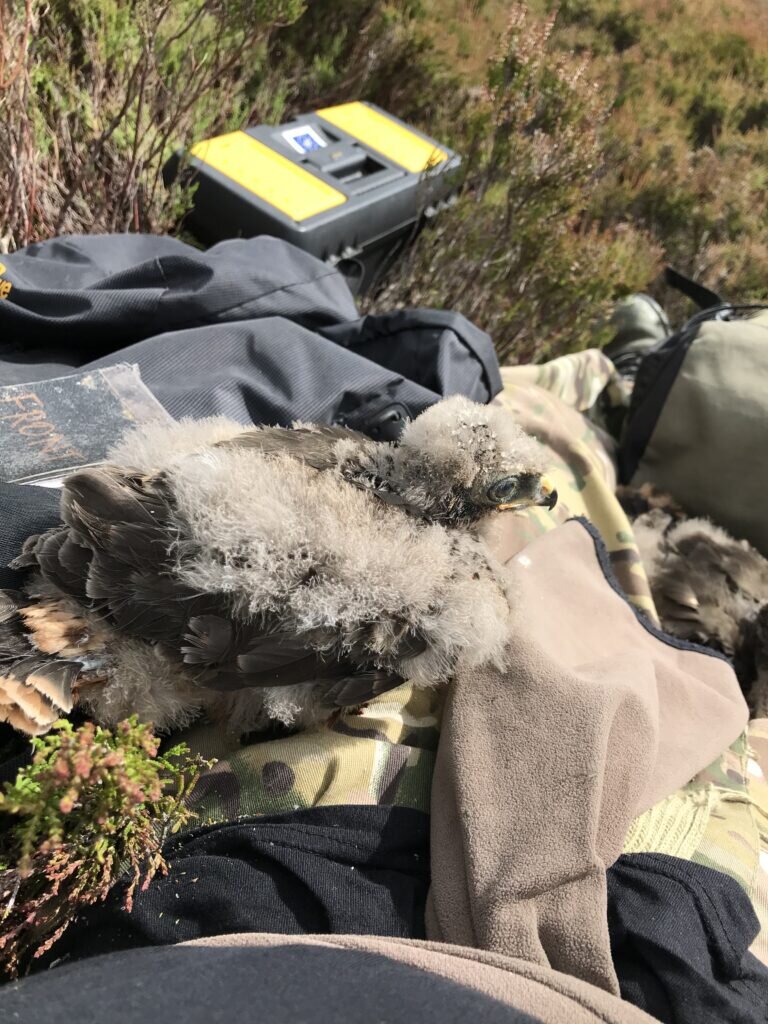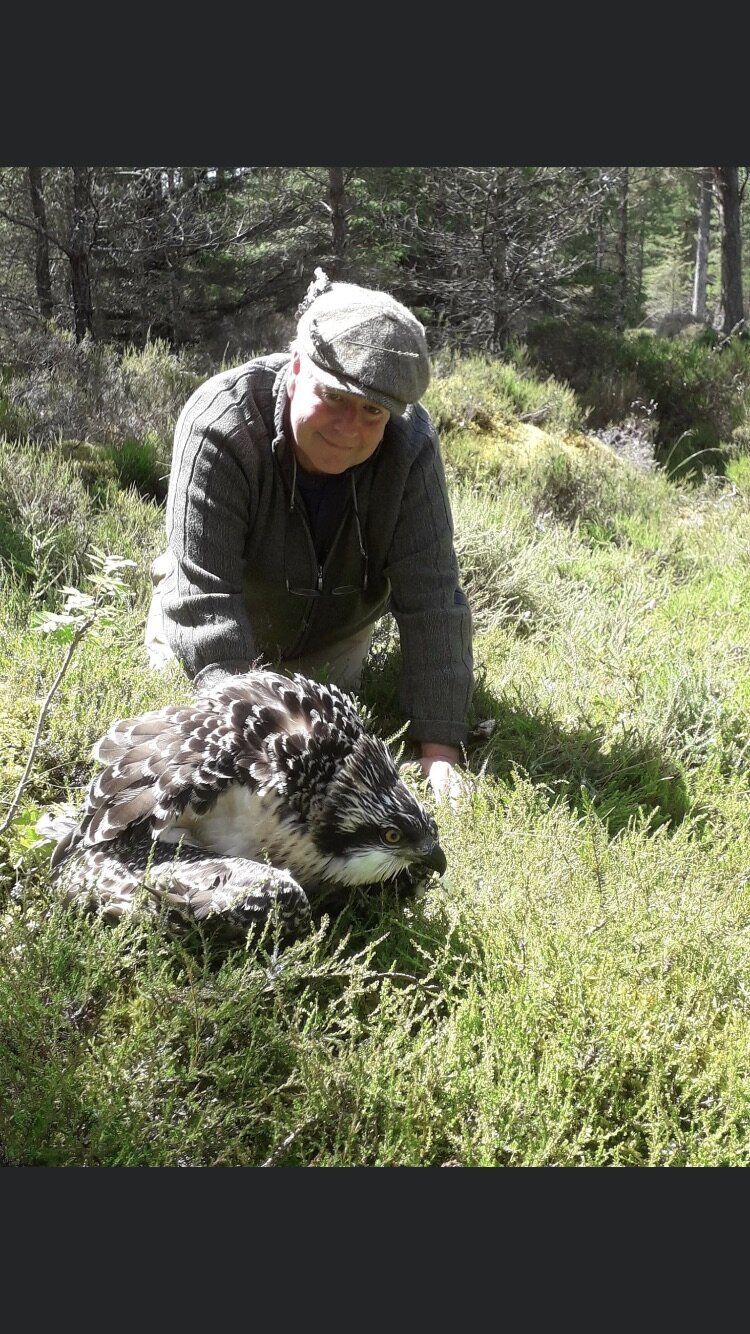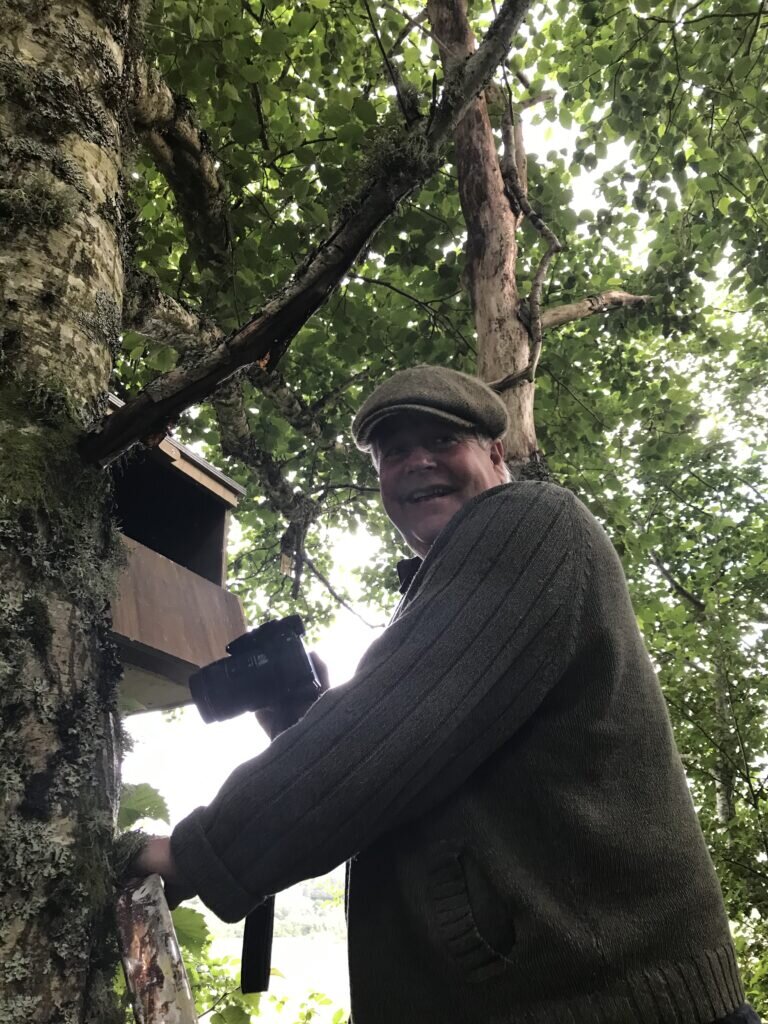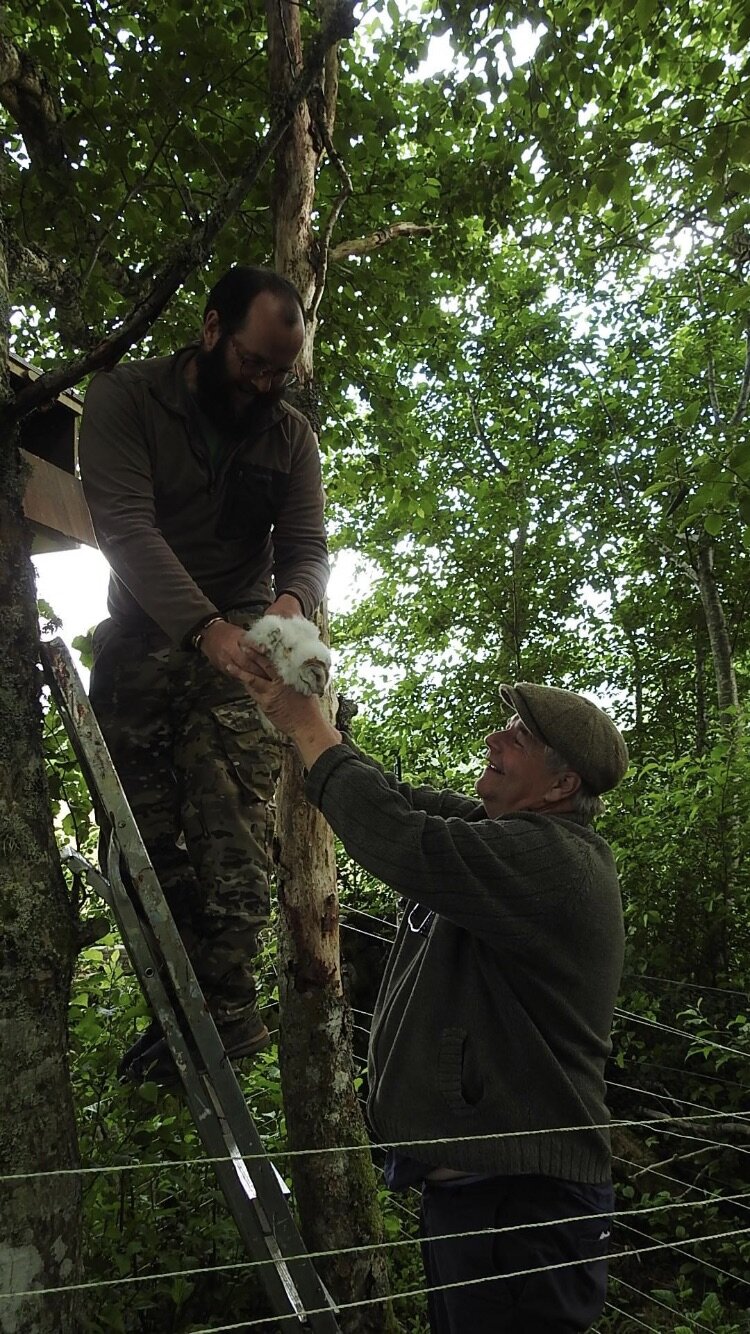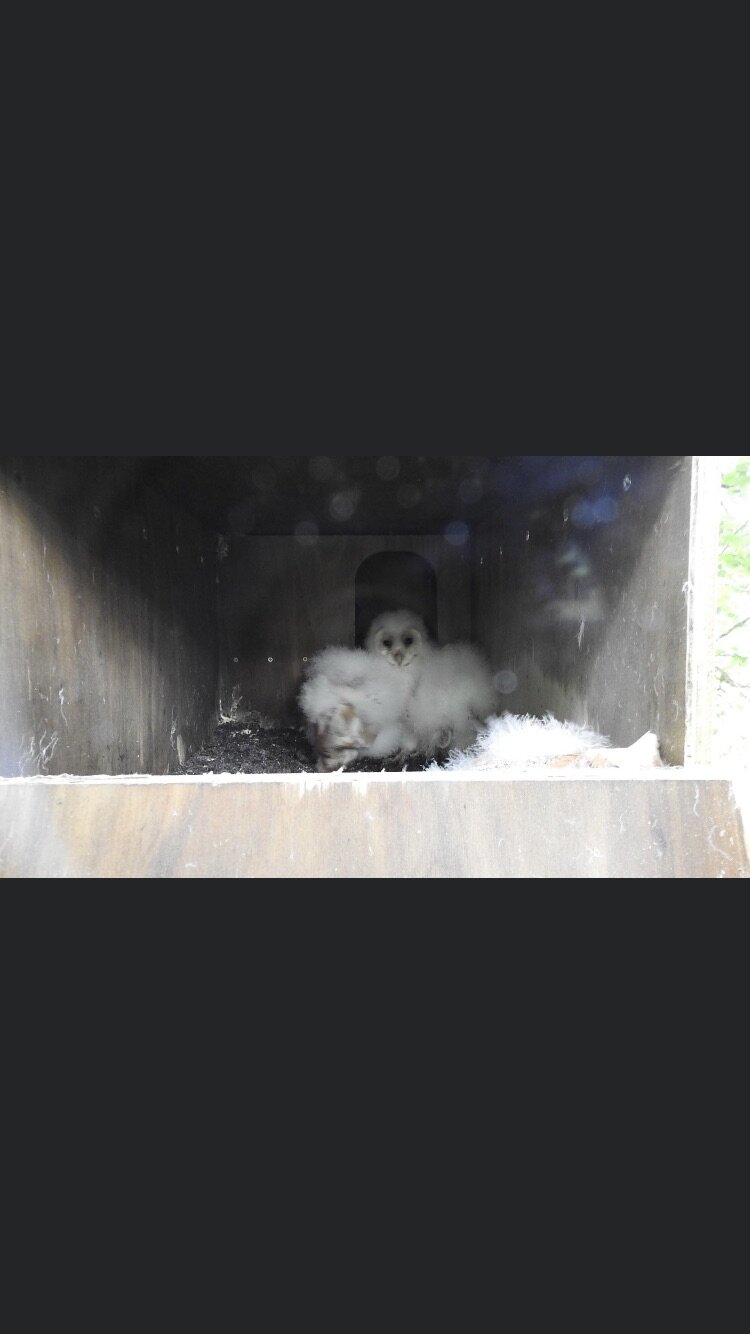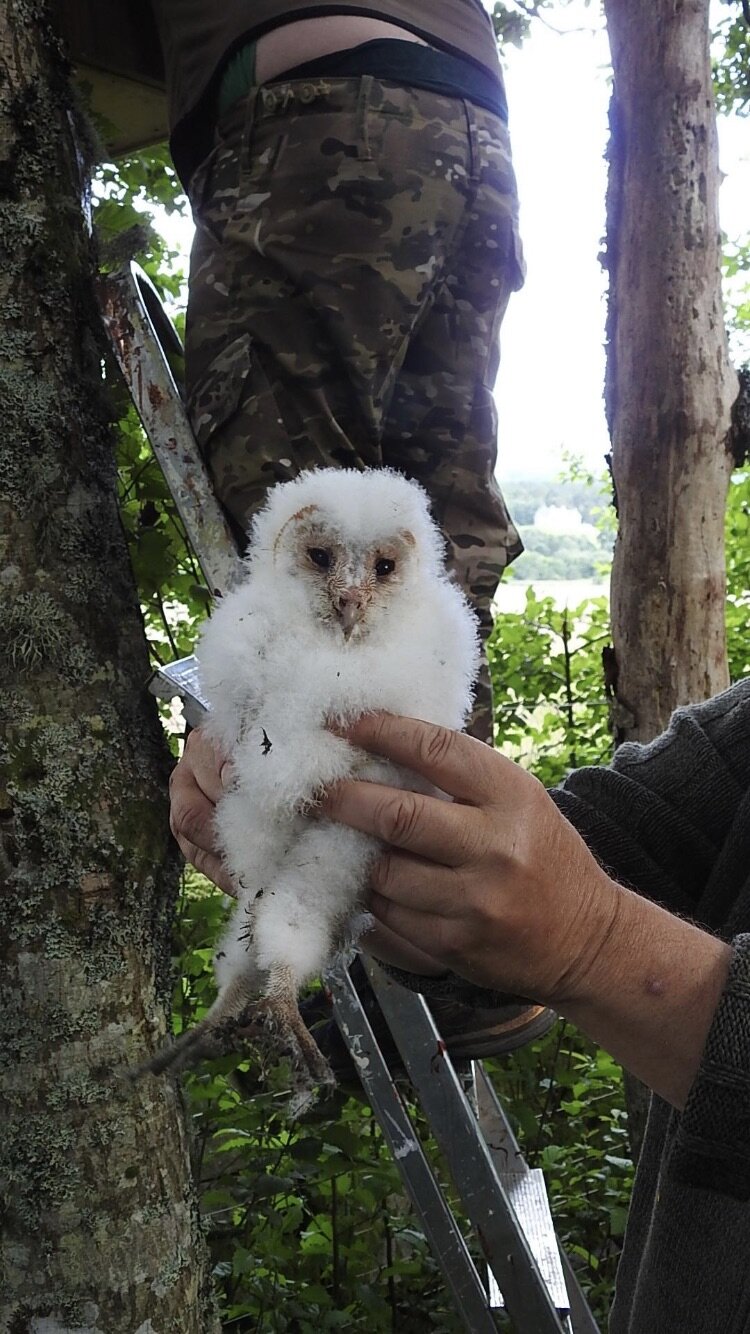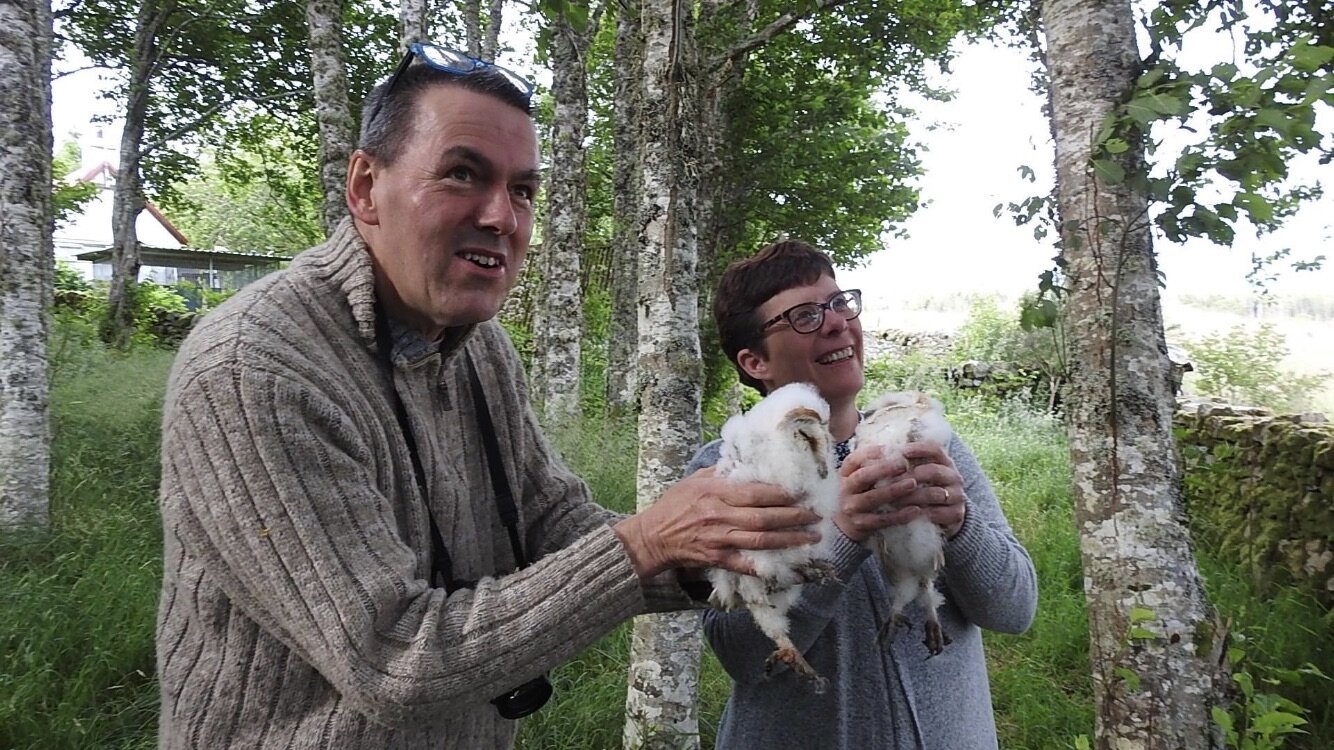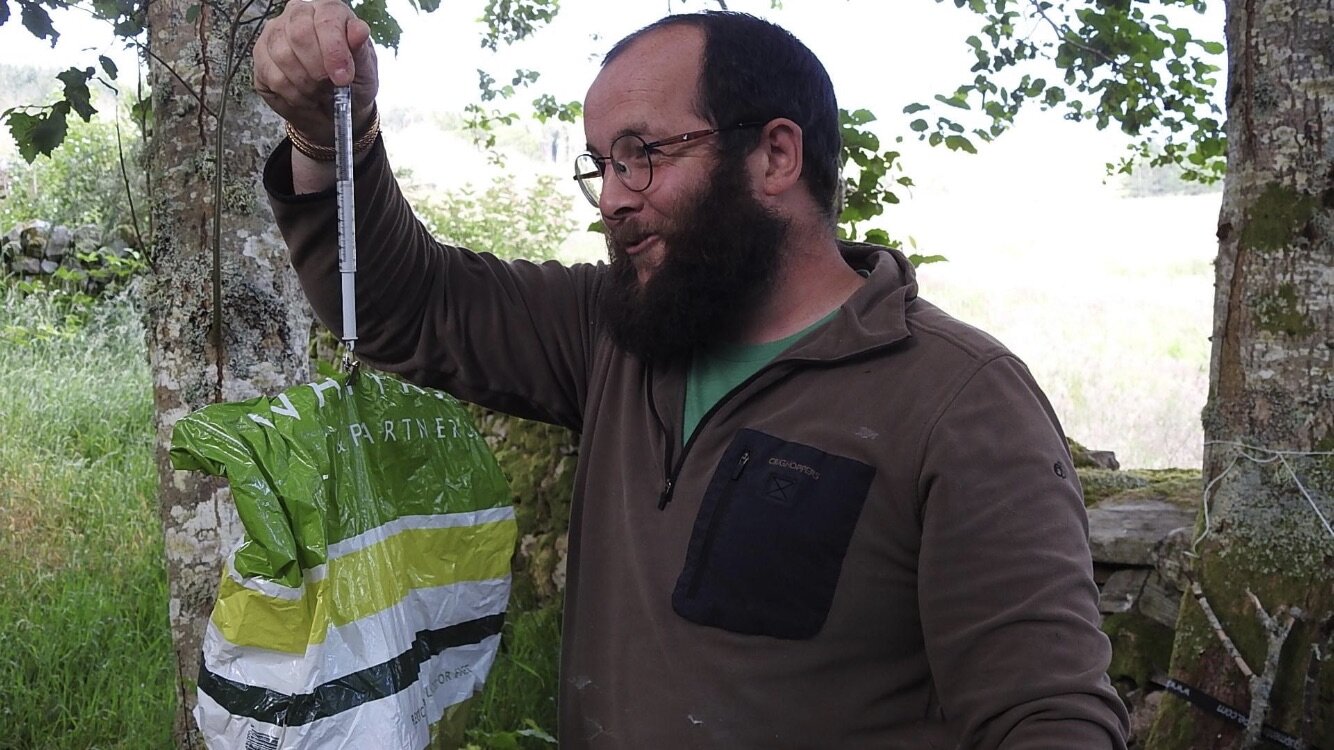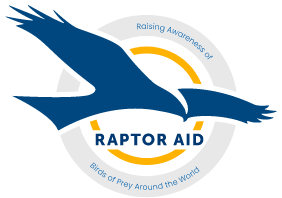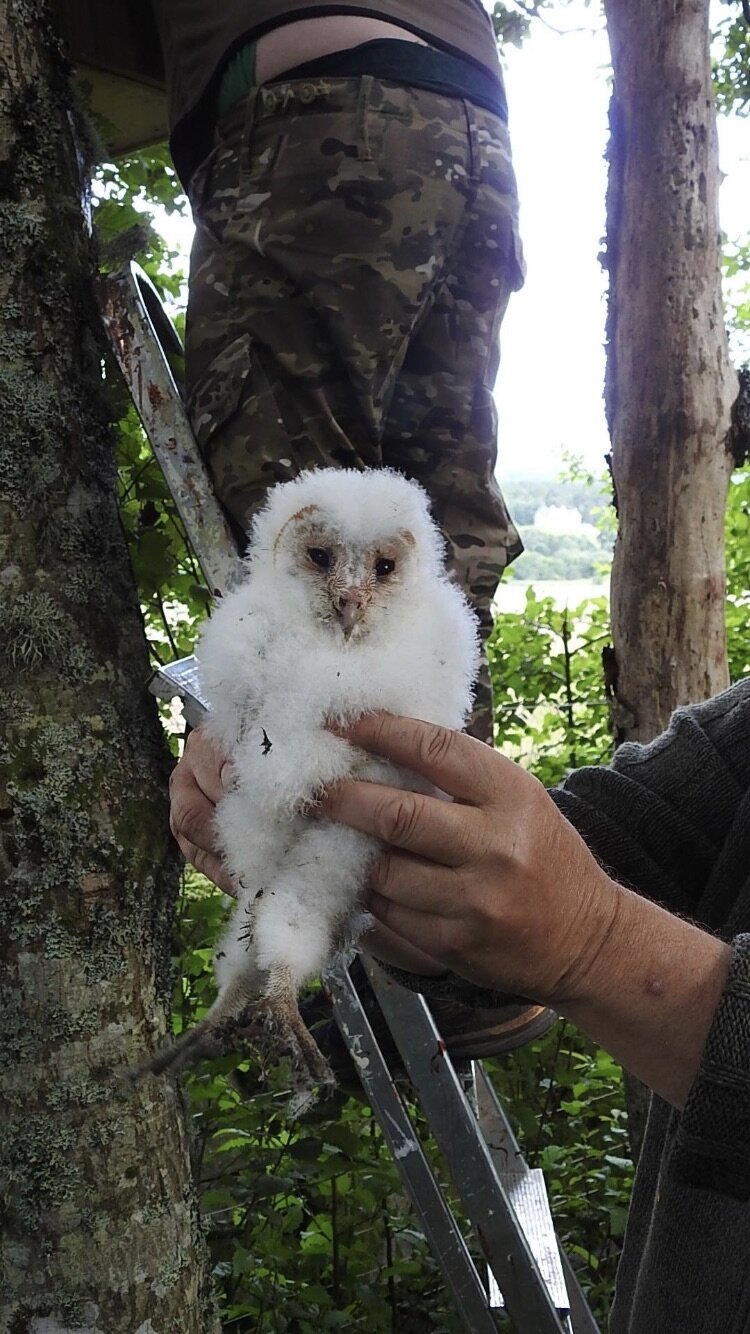Scotland 2020.... Part 2 - Barn owls & Hen Harriers!
*All photos are at the end of the blog in a gallery format. Please note these images were taken under licence and remain copyright of Raptor Aid CIO
One of the shining beacons of hope for many wildlife lovers during lock down has possibly been the use of webcams broadcasting nests online from a range of species. One pair of birds I've enjoyed following has been Ash and Tracey Smith's Barn owls which they have been using camera traps to monitor throughout the breeding season as the pair of owls took up residency in their purpose-built box. Two things that got me excited about this pair of Barn owls is that they are so far north in the Highlands of Scotland it was going to be interesting to see how they fared compared to their Southern counterparts in my home county of Cheshire where I also monitor them. I was also interested to see how the nest box was doing as it was one produced by Lester at Peak Boxes where we get the boxes from that we use and sell, knowing the weather can be fairly brutal through the winter in the Highlands I was keen to see how the box had done in its first year.
Staying with Ash and Tracey at Invercassley is always a treat, they look after me so well which makes a massive difference when you've been slogging across moor's and up trees all day, they have this lovely little bothy down the garden which is perfect for me to fall asleep in listening to the shrieks of the Barn owl chicks as they wake up and call for supper. Ash is also the founder of the incredible charity the Hawk Conservancy Trust who in my eyes are one of the leaders in global raptor conservation based here in the UK. They have a fabulous set up for their captive collection of birds, put on the best flying displays you will see in the UK and back it up with the conservation and science you'd want & expect to see from a captive collection. Ash's dad started it as a zoological collection and the tales that come with it are hilarious, if you ever get to hear Ash carry out a talk it’s fantastic. Now, I love a good story, can talk the leg off a Secretary bird and along with our mutual love of raptors and childish antics when you put me and Ash together and you can't get a word in edge-ways – poor Tracey.
One of my most important jobs though was to ring the Barn owl chicks in Ash and Tracey's nest box, and Ash was like a kid at Christmas, I'm pretty sure we had to make him sit on his hands and wait until I'd opened the box before he could come and help. The box as expected looked like it had only gone up the month before, this duraply wood is such incredible stuff if people are making wooden boxes, they really shouldn't be using anything else, it will even outlive marine ply and knocks spots off other ply for sustainability. Getting to the box I felt like Tom Cruise in Mission Impossible, because they have Pine Martens frequent their garden and Pine Martens will only to happily take a young owlet or egg Ash and Tracey had surrounded the whole tree and boundary wall with electrified fencing - That's commitment. Electric turned off and Ash, Tracey and their friends Nick and Jan stood awaiting the news of how many Barn owls’ chicks were in the box........
I love this part and this is one of the amazing things about Barn owls, they really do ignite so much love and passion for the natural world and it never gets old seeing a landowner’s excitement and joy when they are there to help with the monitoring 'their' Barn owls. I believe the four of them had a sweep stake on how many Barn owls were in the box and I think Jan won with a guess of 4, a great brood size in what has actually proved to be a pretty poor year for Barn owls in my area, Cheshire, which saw plenty of breeding attempts but the unpredictable weather led to failures and small brood sizes of 2's and 3's so four in the north of Scotland was a real treat. Ash had commented that there appears to be a glut of voles around the cottage and some of them they have seen the adults were bringing back were whoppers. All four chicks were fitted with metal BTO rings, bio-metric's taken and then safely placed back in their nest box and I'm pleased to report they all fledged safely. Barn owls have been known in good years to have large broods of upward of 7 or in very rare cases 8 but in a good year a brood of 4 or 5 is not uncommon, this allows them to make up for poor years where they might struggle to raise 1 or 2 chicks to fledging. Life as a Barn owl is getting ever harder with the extreme weather patterns we are having, if you are in the position to leave a bit of ground rough or can influence a farmer or landowner to do so you will help a whole host of wildlife including birds of prey.
I also did another brood of Barn owl up the road that had 5 youngsters this time although one of them had already left the nest box, we managed to ring four more. This box was inside a newish lambing shed so it goes to show given a good nest box they can still adapt to the loss of old barns if the prey rich habitat is there. Ashley has now found a partner in crime to help him with an owl nest box project which I think will be really fascinating to help with, in the meantime I gathered lots of Scottish Barn owl pellets for the children to dissect.
My final day in Scotland arrived and it really was the cherry on top, I've already spewed my undying awe and appreciation for Brian but to spend the day out on the moor's helping him monitor possibly his favourite species and one I've had nothing to do with other than to watch from afar will stay with me for life. I'm talking about the Hen Harrier, a bird that sadly has the tag of most persecuted bird of prey in the UK thanks to its moorland breeding habits and predilection for eating Red grouse chicks among many other species. It is for this reason it has been and still is shot, trapped and disturbed to the point of clinging on as breeding bird in the UK with its only real stronghold being a couple of Scottish Islands free from Grouse moors. That is not to say there are not breeding Hen Harriers and according to the Scottish Raptor Study Groups Annual report of 2018 the groups managed to check 605 home ranges which were occupied by 277 pairs, 230 pairs were monitored with 110 pairs known to fledge young. Now failure can result from several natural outcomes such as weather, natural predation, lack of food but over half the home ranges checked are vacant of breeding birds and again as recent scientific papers have shown with the use of satellite tracking technology this species is being suppressed by the game shooting industry.
No one knows this better than Brian, who for over forty years has spent his life monitoring this species and seeing how vast tracts of perfect harrier habitat are devoid of this species because the landowners won't tolerate this bird on their land. He has seen land change hands and the harriers return; in fact, we drove past one area he pointed out that because of the change in ownership he's is expecting to see a return of harriers again. Another aspect that Brian gets to see is the age based on the moult of the breeding adults which he explained is often made up of 1st and 2nd calendar year birds filling the gaps left by the loss or lack of adult birds. Hen harriers wander, you only have to be lucky enough to watch one float across a moorland to understand how this bird can cover huge swathes of moorland in a single day, unfortunately they haven't evolved to recognise a safe moorland from a deadly one.
Away from the politics and onto the moor I trudged and tripped my way behind Brian who sprightly bounced his way to the first nest site, leaving me to think how can I get left behind by another 70 somethings year old man again. I didn't know what to expect, I've seen images of HH nests and know they are ground nesters but it’s so cryptic you could walk within a metre and go straight past it. Just a small flattened patch in the heather and two small furious looking chocolate brown frogs looking at you, I say frogs they look nothing like frogs but for their outstretched wings in defence pose, beaks wide open and these huge eyes which haven't quite been enveloped by that classic harrier facial disc. If my memory is correct there was a male and a female, the male having the daintiest of legs and feet, perfectly evolved for plucking small mammals and birds from the heather and tussock grass. They really were angry little shits though, which makes perfect evolutionary sense if your being left alone on the floor whilst your parents are out hunting. Biometrics taken, rings fitted and DNA sample gathered we placed them back in the nest and left swiftly.
The second nest was a slog, heather up to your knee's is tough work, my legs worked as hard as Brian's memory trying to remember the exact location of the nest as he'd forgotten his GPS. To his credit and despite a lot of traipsing and looking into the distance we found it but I have to admit there was one point where all I could hear were my legs and brain saying, we've got an 8-hour drive after this Mr! Sit down and get that quiche and Battenberg inside you!
This time I was treated to a brood of 4 angry frogs, but once we sat in the heather away from the nest to quickly get what we needed done they calmed down. It was another one of those lifetime memory moments, sitting in the heather with one of the UK foremost experts on Hen harriers plying his lifetimes skills and knowledge to try and help us understand a little bit more to help this species hold on. As we walked out, we turned back to spot the male floating away in front of us, he must have been waiting to come in and do a food drop Brian said with a smile on his face. We stood like school kids in awe as this male grey ghost danced on the wind, hugging the grass one moment and then in the blink of an eye he was in the heavens dancing with the sun, how anyone could want to hurt and kill a creature like that is beyond me.
I thought back to the two male chicks I'd held and wondered if they'd ever get to that beautiful adult plumage in a year or two? The truth of it is that the figures show that out of the 4 harriers I met in the final nest 3 are likely to be killed illegally. The positive I took from this experience though is knowing that they still have someone like Brian in their corner and if you follow the news the tide is certainly turning, they have me in their corner now to!
On the walk out I chatted to Brian about something close to my heart about getting the younger generation involved in monitoring raptors, this is something Brian is very much onboard with and it’s something that I hope to progress with Raptor Aid and our association with the HRSG. So, if you're age 40 + raptor monitor-er reading this well done for staying awake, you need to be open to giving opportunities like Brian and several others have to me. If you're lucky enough to be classed as a youngster and you’ve got this far, you must have half a brain and the patience to sit watching nothing for 4 hours, please take advantage of the amazing knowledge that is out there, you have to put the hard yards in and you’ll get a lifetime of incredible wildlife memories!
Scotland until 2021!
Yours in raptors,
Jimmi
